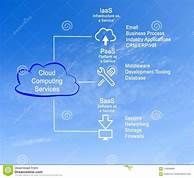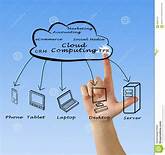
Everyone is now heading to the Cloud World (AWS, GCP, Azure, PCF, VMC). A public cloud, a private cloud, or a hybrid cloud might be used. These cloud computing services offer on-demand computing capabilities to meet the demands of consumers. They provide options by keeping IT infrastructure open, from data to apps. The field of cloud-based services is wide, with several models. It might be difficult to sort through the abbreviations and comprehend the differences between the many sorts of services (Rajiv Chopra, 2018). New versions of cloud-based services emerge as technology advances. No two operations are alike, but they do have some qualities. Most crucially, they simultaneously exist in the very same space, available for individuals to use.

Infrastructure as a Service (IaaS)
IaaS offers only a core infrastructure (VM, Application Define Connection, Backup connected). End-users must set up and administer the platform and environment, as well as deploy applications on it (Van et al., 2015).
Examples – Microsoft Azure (VM), AWS (EC2), Rackspace Technology, Digital Ocean Droplets, and GCP (CE)
Advantages of IaaS
· Decreasing the periodic maintenance for on-premise data centers.
· Hardware and setup expenditures are eliminated.
· Releasing resources to aid in scaling
· Accelerating the delivery of new apps and improving application performance
· Enhancing the core infrastructure’s dependability.
· IaaS providers are responsible for infrastructure maintenance and troubleshooting.
During service failures, IaaS makes it simpler to access data or apps. Security is superior to in-house infrastructure choices.
Container as a Service (CaaS)
CaaS is a type of container-based virtualization wherein customers receive container engines, management, and fundamental computing resources as a service from the cloud service provider (Smirnova et al., 2020).
Examples – are AWS (ECS), Pivotal (PKS), Google Container Engine (GKE), and Azure (ACS).
Advantages of CaaS
Containerized applications have all the necessary to operate.
Containers can accomplish all that VM could without the additional resource strain.
Containers need lower requirements and do not require a separate OS.
Containers are maintained isolated from each other despite both having the very same capabilities.
The procedure of building and removing containers is rapid. This speeds up development or operations and reduces time to market.
Platform-as-a-Service (PaaS)
It offers a framework for end-users to design, operate, and administer applications without having to worry about the complexities of developing and managing infrastructure (Singh et al., 2016).
Examples – Google App Engine, AWS (Beanstalk), Heroku, and CloudFoundry.
Advantages of PaaS
Achieve a competitive edge by bringing their products to the marketplace sooner.
Create and administer application programming interfaces (APIs).
Data mining and analysis for business analytics
A database is used to store, maintain, and administer information in a business.
Build frameworks for creating bespoke cloud-based applications.
Put new languages, OS, and database systems into the trial.
Reduce programming time for platform tasks such as security.
Function as a Service (FaaS)
FaaS offers a framework for clients to design, operate, and manage application features without having to worry about the complexities of developing and managing infrastructure (Rajan, 2020).
Examples – AWS (Lamda), IBM Cloud Functions, and Google Cloud Function
Advantages of FaaS
Businesses can save money on upfront hardware and OS expenditures by using a pay-as-you-go strategy.
As cloud providers deliver on-demand services, FaaS provides growth potential.
FaaS platforms are simple to use and comprehend. You don’t have to be a cloud specialist to achieve your goals.
The FaaS paradigm makes it simple to update apps and add new features.
FaaS infrastructure is already highly optimized.
Software as a Service (SaaS)
SaaS is also known as “on-demand software” at times. Customers connect a thin client using a web browser (Sether, 2016). Vendors may handle everything in SaaS, including apps, services, information, interfaces, operating systems, virtualisation, servers, storage, and communication. End-users must utilize it.
Examples – Gmail, Adobe, MailChimp, Dropbox, and Slack.
Advantages of SaaS
SaaS simplifies bug fixes and automates upgrades, relieving the pressure on in-house IT workers.
Upgrades pose less risk to customers and have lower adoption costs.
Users may launch applications without worrying about managing software or application. This reduces hardware and license expenses.
Businesses can use APIs to combine SaaS apps with other software.
SaaS providers are in charge of the app’s security, performance, and availability to consumers.
Users may modify their SaaS solutions to their organizational processes without having any impact according to their infrastructures.
Conclusion for Cloud Computing Services
Cloud services provide several options for enterprises in various industries. And each of the main — PaaS, CaaS, FaaS, SaaS, and IaaS – has advantages and disadvantages. These services are available on a pay-as-you-go arrangement through the Internet. Rather than purchasing the software or even other computational resources, users rent them from a cloud computing solution (Rajiv Chopra, 2018). Cloud services provide the advantages of sophisticated IT infrastructure without the responsibility of ownership. Users pay, users gain access, and users utilise. It’s as easy as that.







